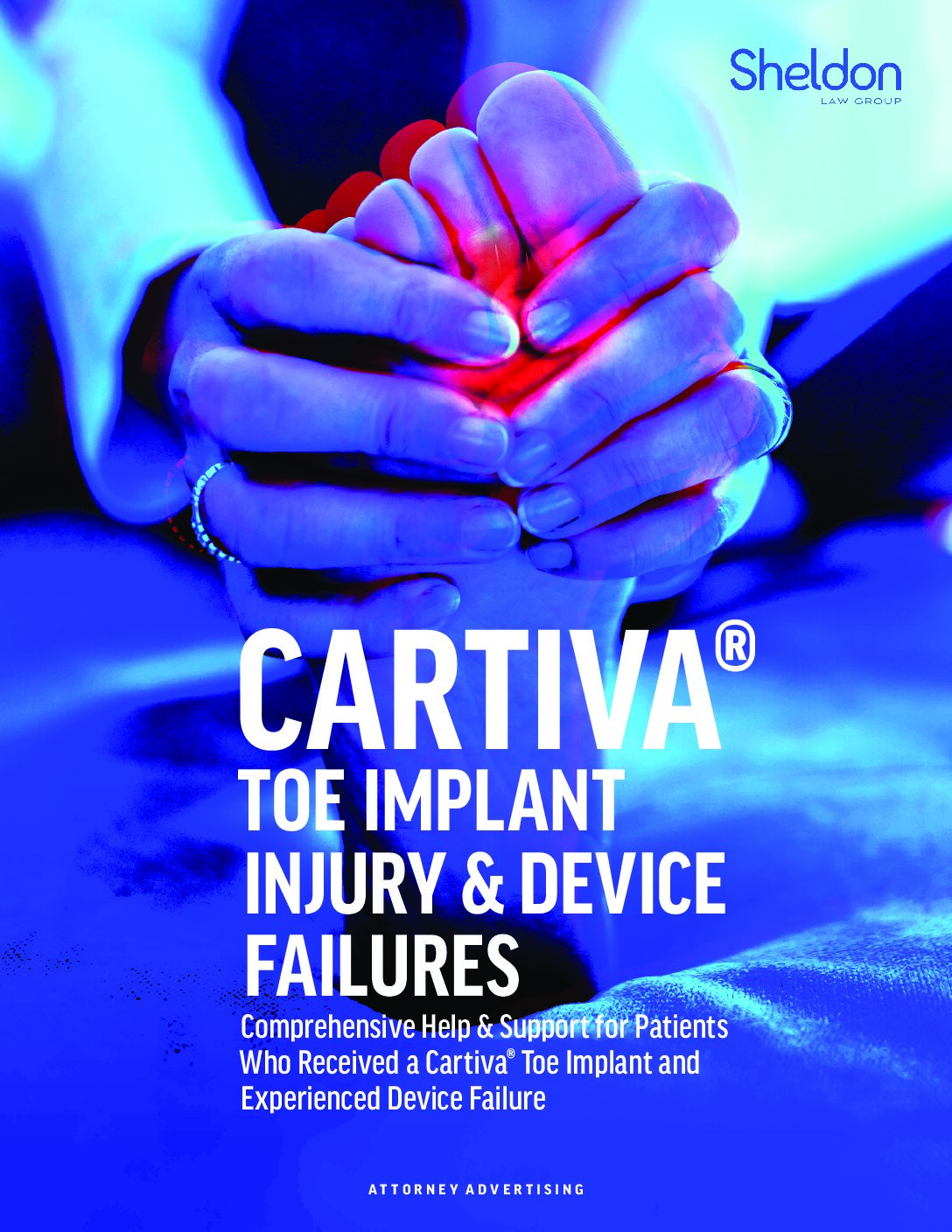The Potential Long-Term Effects of Cartiva Toe Implant Injuries
In recent years, Cartiva toe implants have gained popularity as a solution for individuals suffering from arthritis in the big toe. Cartiva is a synthetic material designed to mimic the properties of natural cartilage. It is commonly used in toe joint replacement surgeries, particularly for those dealing with osteoarthritis in the big toe. The goal is to alleviate pain, restore joint function, and improve overall quality of life for patients.
Get A 100% Free CASE EvaluationShort-Term Benefits
In the short term, many individuals experience relief from pain and improved joint movement after undergoing Cartiva toe implant surgery. The minimally invasive nature of the procedure and the quick recovery initially make it an attractive option for those seeking relief from arthritis symptoms.
However, some patients have reported experiencing complications and unforeseen issues related to Cartiva toe implants. These concerns raise questions about the long-term efficacy and safety of this procedure.
Implant Subsidence
One of the main implant failures is subsidence. Subsidence occurs when the implant sinks or subsides, into the bone. This could result in diminished joint functionality and an increase in pain, reversing the initial benefits of the surgery.
Inflammatory Responses
Some patients have reported persistent inflammation in the joint area following Cartiva toe implant surgery. Chronic inflammation can contribute to joint instability, discomfort, and, in severe cases, may necessitate additional surgical interventions.
Limited Long-Term Studies
One of the challenges in understanding the long-term effects of Cartiva toe implants is the limited availability of comprehensive, extended studies. The relative novelty of this procedure means that researchers are still in the process of collecting data on patients who underwent the surgery several years ago.
Revision Surgeries
In cases where complications arise, individuals may need revision surgeries to address issues with the Cartiva implant. Revision surgeries pose their own set of challenges, including prolonged recovery times, increased medical expenses, and the potential for ongoing complications.
Patients considering Cartiva toe implant surgery should carefully weigh the potential short-term benefits against the emerging concerns regarding long-term effects. It is crucial for individuals to engage in open discussions with their healthcare providers, asking about alternative treatments, potential risks, and the availability of long-term data on Cartiva toe implant outcomes.
If You Had to Have Revision Surgery After Receiving a Cartiva Toe Implant, We Can Help.
If you have suffered from complications after receiving a Cartiva Toe Implant, contact us now. We are fighting to protect the rights of patients allegedly injured by Cartiva toe implants and hold the device makers fully accountable for putting profits above the health and well-being of patients.
Patients who received a Cartiva toe implant and were forced to have revision surgery to remove or replace the device, may be entitled to significant financial compensation. Contact us now to learn more about your rights and whether you are entitled to compensation.

